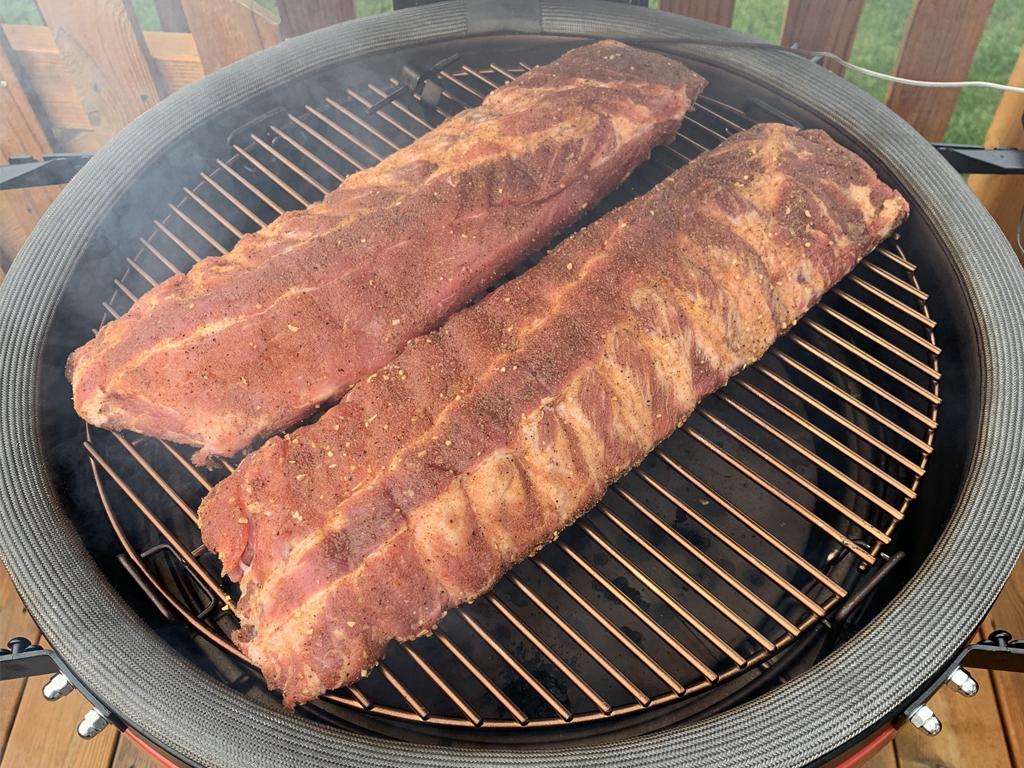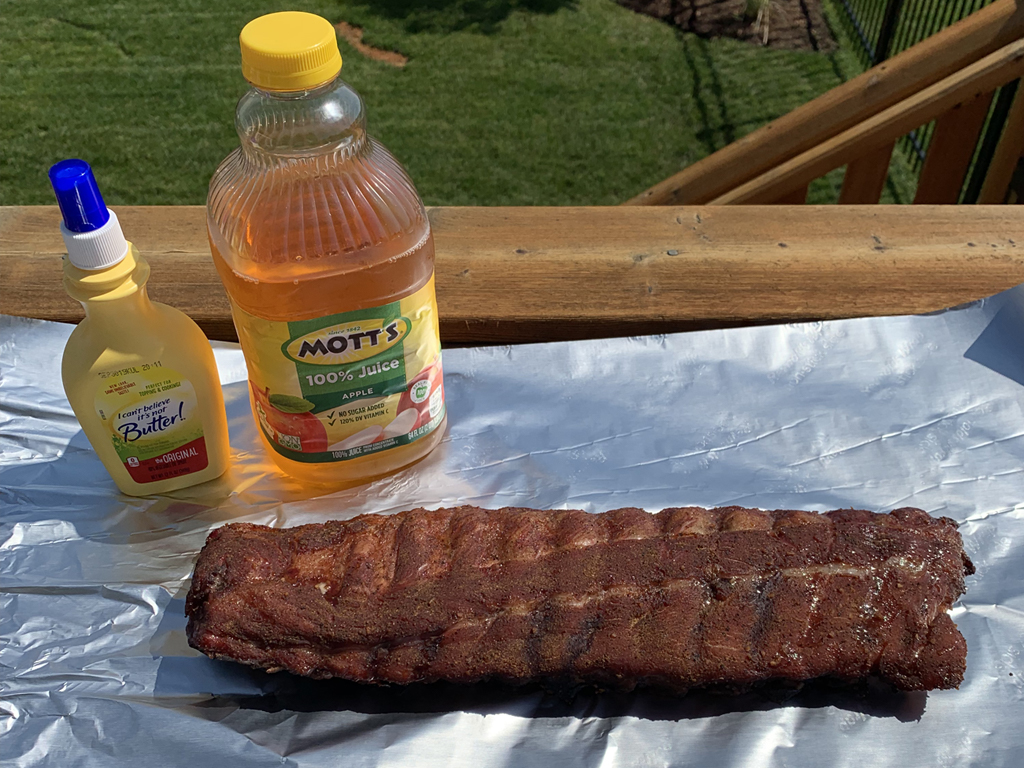The 3-2-1 rib method is very popular among backyard cookers because it produces “fall of the bone” ribs which most people tend to like. This method won’t win you any competitions (we’ll cover competition style ribs later) but everyone will love them. It’s called the 3-2-1 method because it follows this basic schedule:
There are several 3-2-1 rib recipes out on the internet but this one uses only simple, store bought ingredients:
Remove the pork ribs from the packaging. Pat dry with a paper towel. Remove the membrane from the bone side. (check YouTube for videos about removing the membrane if you haven’t done it before).
Preheat the Kamado to 225°. Intersperse the apple chunks throughout. I’ve seen some people place them on top of the charcoal and some people place them all so that they touch the bottom of the firebox. This time I had them touch the bottom of the firebox. I also put in more chunks than last time for additional smoke (probably 5 to 6 big chunks).
Slather your ribs and apply your rub. One of the more popular items to use as a slather is yellow mustard. If using a slather, evenly coat the entire surface and sides of your ribs. This time I didn’t use one. Apply your rub evenly (I’m using Famous Daves Rib Rub), making sure to get the sides of the ribs also.

Place the ribs on the grill. I can fit two slabs comfortably on my Kamado Joe Classic 18”, 3 slabs if I cut one slab in two halves and 4 slabs if I use a rib rack. I’m already wishing I got the Big Joe.
Let the ribs cook for the first 3 hours of the 3-2-1 method. This cook I left them alone for the entire 3 hours. On previous cooks I’ve sprayed them with apple juice, apple cider vinegar or even water. Spraying adds moisture and enhanced the ability of the smoke to stick to the meat.

After 3 hours, take the ribs off the grill and wrap in foil. Before closing the foil, add apple juice and spray with spray butter. Close the foil in such a way to create as much of an air-tight seal as possible to keep allow the ribs to steam in the package. I usually fold in the ends and then fold the long sides upright before rolling them closed, like you would do with a lunch bag.

After the next 2 hours, unwrap the ribs and apply barbeque sauce. I apply a very light coating since some people in my family don’t like their ribs too sweet. Place the ribs back on the grill for an additional hour. Hopefully by now you’ve been maintaining an even 225° temperature. In the last hour I open the top vent a little more and allow the Kamado to drift up to 250°. We let the temperature increase to tighten and caramelize the barbeque sauce on the top.

Once done, remove the ribs and place on a large plate or baking sheet. You should see the meat has pulled up on the bones and, if you cut a bone or two off, the nice smoke ring you’ve created over the last 4 hours the ribs have been exposed to the smoke.
At this point you can either apply additional barbeque sauce or allow your guests to sauce them themselves.

